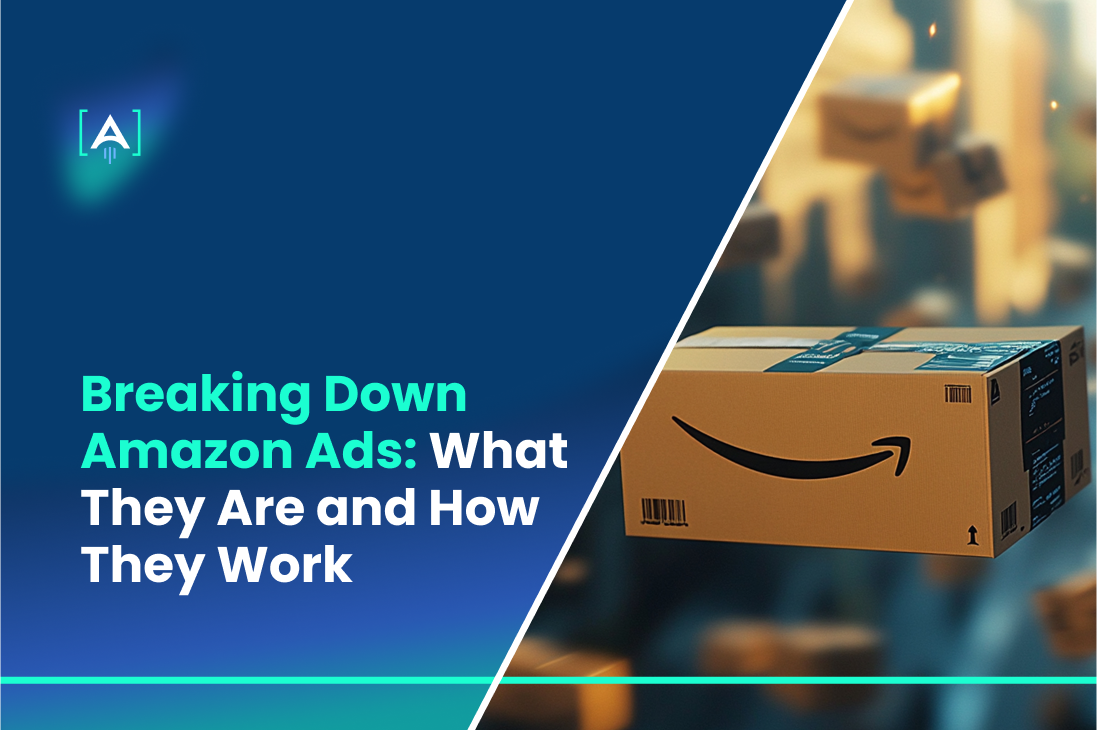Amazon is much more than an online marketplace. It’s a busy digital environment where countless products are challenged for visibility. To succeed in this competitive space, it’s essential to understand how Amazon ads work.
From 2004 to 2023, Amazon’s net revenue from e-commerce and service sales increased tremendously. In 2023, Amazon’s net revenue from the subscription services segment amounted to 40.2 billion U.S. dollars.
Source: Annual net sales revenue of Amazon from 2004 to 2023, Statista
Amazon ads are essential for sellers to increase their visibility and sales amidst intense competition. Accordingly, an Amazon Ads Agency can optimize Amazon ads to reach target audiences and drive business growth effectively by leveraging well-defined strategies and expert knowledge.
In this guide, we’ll clarify the world of Amazon advertising. You’ll learn what Amazon ads are, how they work, and how to leverage them to boost your product visibility and sales.
The Fundamentals of Amazon Advertising
Have you ever thought about the question of “What are amazon ads“? If yes, then let’s clarify.
Amazon ads is a robust advertising platform that enables sellers to advertise their products directly on Amazon’s website and its affiliated sites.
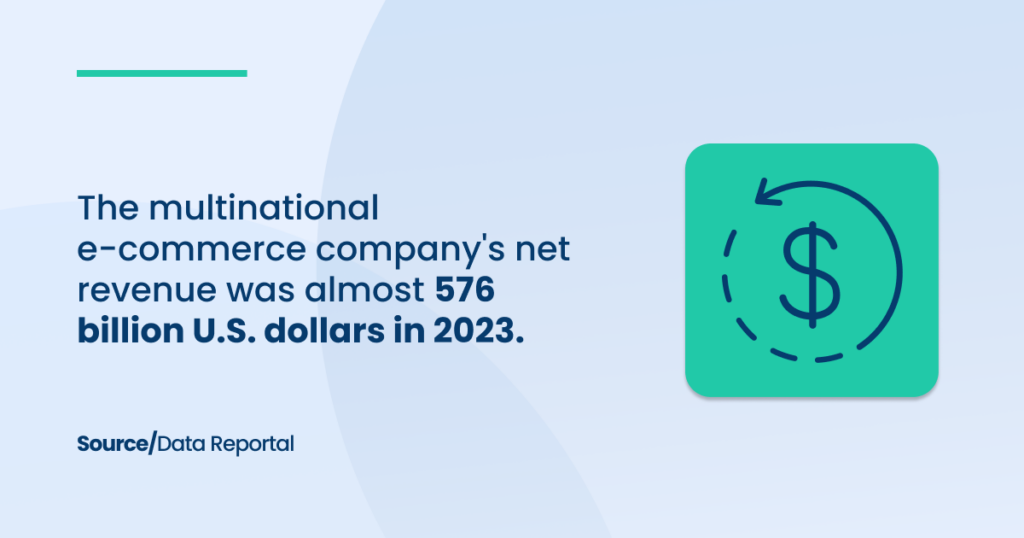
Considering that Amazon was ranked as the world’s most valuable retail brand, with a brand value of around 185 billion U.S. dollars as of 2024, the platform could benefit your business by providing access to a vast and diverse customer base.
Utilizing a sophisticated pay-per-click (PPC) advertising model, Amazon ads help sellers enhance their product visibility where shoppers are already browsing and buying.
Accordingly, the functionality of the Amazon ads is straightforward: sellers choose products they want to advertise, decide on the keywords or products against which the ads should appear, and then pay a fee each time a shopper clicks on their ads.
This model is instrumental in driving traffic and sales, leveraging high shopper intent by displaying ads at the point of purchase.
What are Impressions on Amazon Ads?
Many newcomers to digital marketing ask what Amazon ads are, not realizing these powerful tools can target potential customers based on their specific search and shopping habits on Amazon. After the request, another comes: What are impressions on Amazon ads?
Impressions refer to the number of times an ad is shown on Amazon. They are a key metric for understanding the reach of your advertisements and help gauge the initial level of interest or awareness that ads generate among potential customers.
High impression numbers with low clicks may indicate that the ad content is not compelling enough or that the targeting needs refinement.
Types of Amazon Ads
To understand the deep essence of what are Amazon ads, you should find out the types. Amazon offers various ad types to cater to advertisers’ needs. Each type serves a unique purpose and fits different marketing strategies.
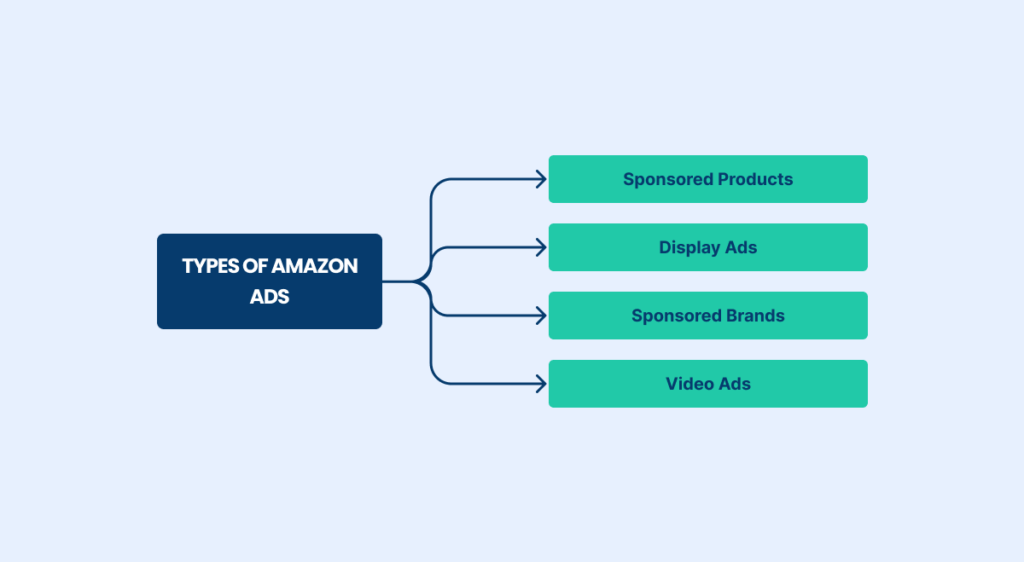
Sponsored Products
Sponsored Products are ads for individual product programs on Amazon.
They are one of the most commonly used ad types due to their simplicity and effectiveness at driving sales directly from product searches.
How Sponsored Products Work
When a customer searches for a product on Amazon, the search results can include Sponsored Products and organic listings. These ads are displayed based on relevance to the customer’s search, and the bid placed by the advertiser is based on specific keywords.
Source: Amazon
Advertisers only pay when a shopper clicks on the ad, leading them directly to the product listing page.
Best Practices for Sponsored Products
Advertisers should optimize their bids and select relevant keywords to maximize the effectiveness of Sponsored Products. High-quality images and compelling product descriptions can also improve click-through rates and conversion.
Monitoring and adjusting bids according to performance metrics are crucial to maintaining cost-effectiveness.
Amazon’s marketing strategies often emphasize optimizing Sponsored Products due to their direct influence on sales and ability to enhance organic rankings over time.
Sponsored Brands
Sponsored Brands are another type of Amazon ad designed to help brands promote a collection of products. These ads appear more prominent on Amazon’s pages, include custom headlines and brand logos, and can link directly to a custom landing page or a Brand Store.
Ad spending on Amazon ads needs to be carefully managed to ensure profitability. It involves setting daily and campaign budgets, understanding seasonal trends, and knowing when to increase bids to capitalize on increased shopping activity, like during the holiday season.
Display Ads
Display ads on Amazon are a form of advertising that appears on Amazon websites, apps, devices, and various external sites.
Source: Amazon
They can be customized to target specific customer segments and are effective for brand awareness. They reach customers at various stages of the shopping journey, not just when they are actively looking to buy.
Video Ads
Amazon video ads are a growing trend, as they offer a dynamic way to engage potential customers.
Source: Amazon
These ads appear in Amazon’s search results, on product detail pages, or as part of Amazon’s streaming content, providing a rich media experience that can drive more robust engagement compared to static ads.
How Amazon Ads Work
Amazon ads provides a dynamic way for sellers and brands to increase visibility and sales through targeted advertising on the Amazon platform.
Understanding what Amazon ads are and how these ads work is crucial for maximizing return on investment and achieving successful marketing outcomes.
The Advertising Auction Mechanism
The core of Amazon’s advertising platform is its auction mechanism, which determines which ads are shown to shoppers based on several factors, including bid amount, ad relevance, and customer search terms.
Bidding and Winning Ads
- Keyword Targeting: Advertisers select keywords relevant to their products, and when a customer’s search matches these keywords, their ads become eligible to appear. This is fundamental in Amazon marketing, where visibility can greatly influence sales potential.
- Auction Dynamics: When multiple advertisers bid on the same keyword, Amazon’s auction decides which ads to display according to the bid amount and the ad’s quality.
- Winning the Auction:
- Bid Amount: The advertiser sets the maximum amount they will pay for a click. Higher bids can maximize the likelihood of winning the auction but at a higher cost.
- Ad Quality: Amazon evaluates the ad quality based on factors like click-through rate (CTR), ad copy relevance, and the overall customer experience. Higher-quality ads may win over higher bids.
Cost Structures: CPC, CPM, CPA

- CPC (Cost Per Click) is Amazon’s most common payment model. Advertisers buy only when a user clicks on their ad. This model is directly linked to the ad’s performance, making it a popular choice for most Sponsored Product campaigns and Ads.
- CPM (Cost Per Thousand Impressions): Some advertisers opt for CPM, paying for every thousand impressions their ad receives. This model is preferred when the goal is brand awareness rather than immediate sales.
- CPA (Cost Per Acquisition): Though not as common, CPA enables advertisers to pay only when a specific action, such as a sale, is completed. This can be highly effective but requires precise tracking and optimization.
Targeting Options
Targeting is a fundamental aspect of Amazon ads, enabling advertisers to reach specific audiences most likely to be interested in their products. Effective targeting increases the relevance of ads to potential buyers, improves conversion rates, and maximizes the return on ad spend.
Keyword Targeting
Keyword Targeting is at the heart of many Amazon advertising strategies, particularly for Sponsored Product Ads and Sponsored Products Campaigns.
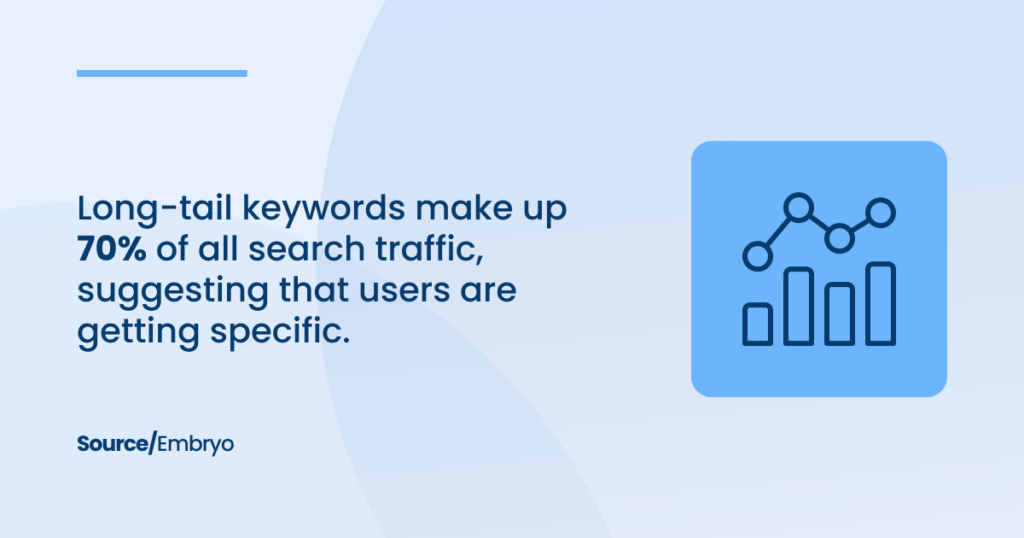
This approach involves selecting keywords that prospective customers might use when searching for products on Amazon.
How to Create Amazon Ads with Effective Keyword Targeting:
- Research Keywords: Utilize tools like Amazon’s own keyword tool within Amazon Marketing Services or third-party tools to find high-volume and relevant keywords related to your products.
- Implement Keywords: Add these keywords to your campaigns. You can choose broad, phrase, or exact match types to control how closely the customer’s search needs to match your keyword.
- Adjust Bids According to Performance: Monitor the performance of your keywords in terms of impressions, clicks, and conversions. Increase bids on high-performing keywords to maximize visibility and decrease on those underperforming to reduce costs.
Optimizing for Cost and Efficiency:
- Understanding Amazon ads cost is crucial in keyword targeting. Advertisers should agree their strategies based on the cost-per-click (CPC) of keywords and their overall effectiveness in driving sales.
- Amazon ads Management involves continually refining keyword strategies, including adding new keywords and pausing those that do not perform well to optimize spending and improve ROI.
Product or Category Targeting
This allows advertisers to place their ads on the detail pages of similar or complementary products. This method is highly effective for reaching customers who are already interested in related products and are more likely to be in the consideration stage of their purchase journey.
Setting Up Product or Category Targeting:
- Select Relevant Categories: Advertisers can target entire categories or specific products within those categories. For instance, if selling sports equipment, targeting related categories like sports apparel can attract customers already interested in sports-related products.
- Use Product Targeting in Sponsored Ads: When setting up Sponsored product ads, advertisers can choose specific products to target or exclude, allowing them to compete directly with competitors’ products or complement their own product offerings.
Leveraging Brand Identity:
- Including a logo and custom imagery in ads helps increase brand recognition and trust, particularly when these ads appear alongside related products. This is crucial for new brands trying to establish themselves on Amazon.
Integrating with Amazon Marketing Services:
- This offers advanced tools for product and category targeting, including detailed performance analytics that help advertisers measure the effectiveness of their targeted ads. Insights from these tools can guide decisions on budget allocation and targeting refinements to enhance campaign outcomes.
Developing a Comprehensive Advertising Campaign:
- Combining keyword and product/category targeting strategies can lead to a more comprehensive advertising campaign covering various customer journey stages, from awareness to consideration to purchase.
By utilizing these targeting options, advertisers can craft more precise and effective advertising campaigns on Amazon, making sure their ad spend is put to optimal use and reaches the right audience.
This strategic approach drives better ad performance and supports broader marketing objectives, maximizing overall sales and enhancing brand visibility on one of the world’s largest retail platforms.
Ad Placement and Visibility
When exploring options to boost online sales, many retailers ask, “What are Amazon ads?” This query leads them to discover Amazon’s suite of advertising services, which can dramatically increase product exposure. But this is not the only question that should be considered. Next comes for Ad Placement.
Effective ad placement on Amazon is crucial for maximizing visibility and driving sales. Ad placement refers to where and how ads are shown to customers shopping on Amazon, which significantly impacts the performance of advertising campaigns.
Understanding where ads appear and the factors influencing their placement can help advertisers strategically enhance their brand’s visibility and engagement.
Where Ads Appear on Amazon
Amazon offers a variety of ad types, each with specific placement options across the platform. Here’s where you can expect different types of ads to appear.
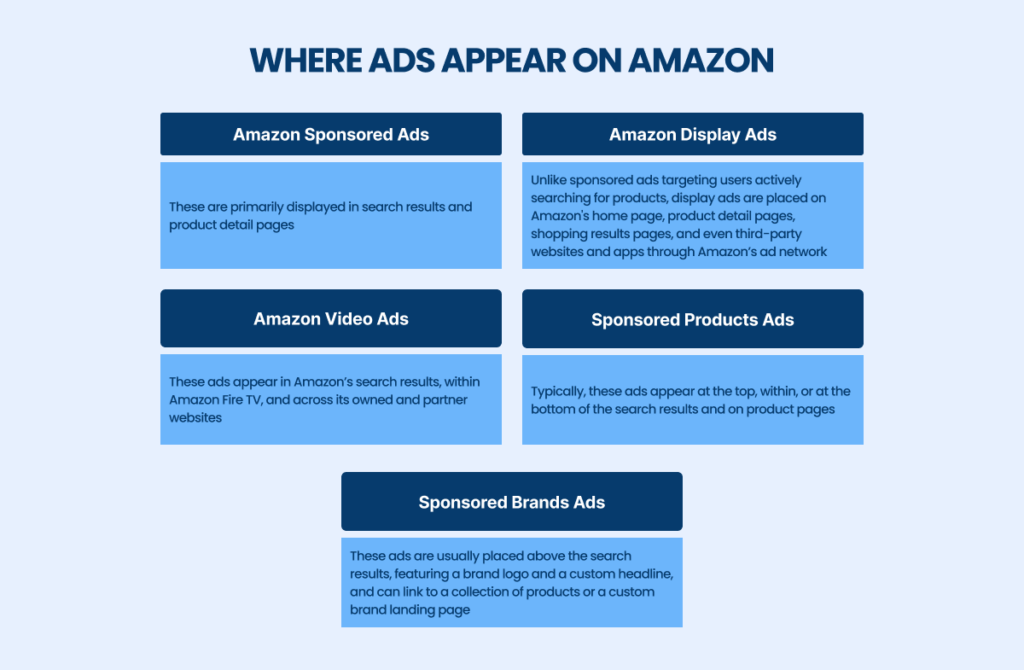
Each type of ad has specific visibility strategies designed to optimize exposure and engage customers at various stages of their shopping journey.
Factors Influencing Ad Placement
Several key factors determine where and how ads are placed on Amazon, affecting their overall visibility and effectiveness:
- Bidding and Budget: The amount you are willing to bid on a keyword or ad placement plays a significant role. Higher bids can lead to better placements, assuming the ad meets Amazon’s quality criteria. The advertising cost directly correlates with visibility; higher investment can yield more prominent placements.
- Relevance: Amazon’s algorithms prioritize ad relevance to ensure a good user experience. Ads closely matching a user’s search query and showing a high likelihood of engagement (through clicks and conversions) are more likely to be prominently displayed.
- Quality Score: Amazon assesses the quality of ads according to several factors, including click-through rate (CTR), conversion rate, and overall customer feedback. Ads with higher quality scores receive better ad placements and can cost less per click.
- Keywords for Amazon Ads: The keywords you select for your ads need to be highly relevant to the products you are promoting. Well-researched keywords that align with user searches are essential for securing good ad placements.
- Product Popularity and Ratings: Products with higher ratings and better reviews tend to get better ad placements on Amazon. Amazon prioritizes user experience, so products that are well-received by customers are more likely to be promoted.
- Campaign Performance: Ongoing campaigns that perform well (with good CTRs, high conversion rates, and low bounce rates) will likely be rewarded with better ad placements over time. This means that continuous optimization and management of your campaigns are crucial for maintaining visibility.
- Inventory and Stock Levels: Ads for products that are out of stock or have low inventory levels may receive poorer placements or may not be displayed at all. Amazon aims to provide a good shopping experience by promoting products that are readily available for purchase.
By understanding these factors and how they interact with Amazon’s ad placement algorithm, advertisers can more effectively strategize their campaigns, optimize their ad spend, and improve the overall visibility of their ads.
This strategic approach drives better performance metrics and supports broader marketing objectives, maximizing overall sales and enhancing brand presence on one of the world’s most competitive retail platforms.
Advanced Strategies and Solutions
As online advertising becomes increasingly complex, particularly on platforms like Amazon, advertisers need to adopt more sophisticated strategies and solutions to maintain competitiveness and enhance their campaign performances.
This section explores how leveraging AI and machine learning and conducting thorough competitive analysis and market trend studies can significantly improve the effectiveness of Amazon ads.
Using AI and Machine Learning
Artificial intelligence (AI) and machine learning (ML) revolutionize how Amazon ads are managed and optimized.
These technologies offer powerful tools for analyzing large datasets, predicting user behavior, and automating ad decisions, which can guide to more effective and efficient campaigns.
Source: Artificial intelligence (AI) market size worldwide from 2020 to 2030, Statista
For instance, AI algorithms can analyze historical data and identify patterns that human analysts might miss. This can include pinpointing the optimal times of day for ad placement, the most effective keywords for Amazon ads, and even predicting which products will perform best in different market segments.
Moreover, machine learning models can continuously learn from campaign outcomes to improve future performance. They adjust bidding strategies in real time, ensuring that advertisers get the best possible return on their investment. By dynamically adjusting bids based on the likelihood of conversion, AI can help control the advertising cost while maximizing the campaign’s reach and effectiveness.
In the context of Amazon Sponsored Ads, AI tools can automate the process of keyword selection and bid adjustments, which saves time and reduces the overhead associated with manual campaign management.
The role of AI extends to enhancing the targeting capabilities of Amazon Display Ads and Amazon Video Ads.
By analyzing user engagement and behavior patterns across the platform, AI systems can better target ads to users who are most likely to be interested in specific products, thereby increasing the relevance and effectiveness of these ads.
Furthermore, AI-driven creative testing allows for the automatic generation and A/B testing of different ad elements, such as headlines, descriptions, and even brand logos, to determine what resonates best with the audience.
Competitive Analysis and Market Trends
Competitive analysis is another crucial element in developing advanced strategies for Amazon advertising.
By thoroughly understanding what competitors are doing—be it the types of Sponsored product ads they are running, the keywords they are targeting, or the design of their Sponsored brand ads—advertisers can develop strategies to differentiate their offerings and capture more significant market share.
Tools that track competitor ads, pricing strategies, and sales performance are indispensable for advertisers looking to stay ahead in highly competitive categories.
Monitoring Market Trends
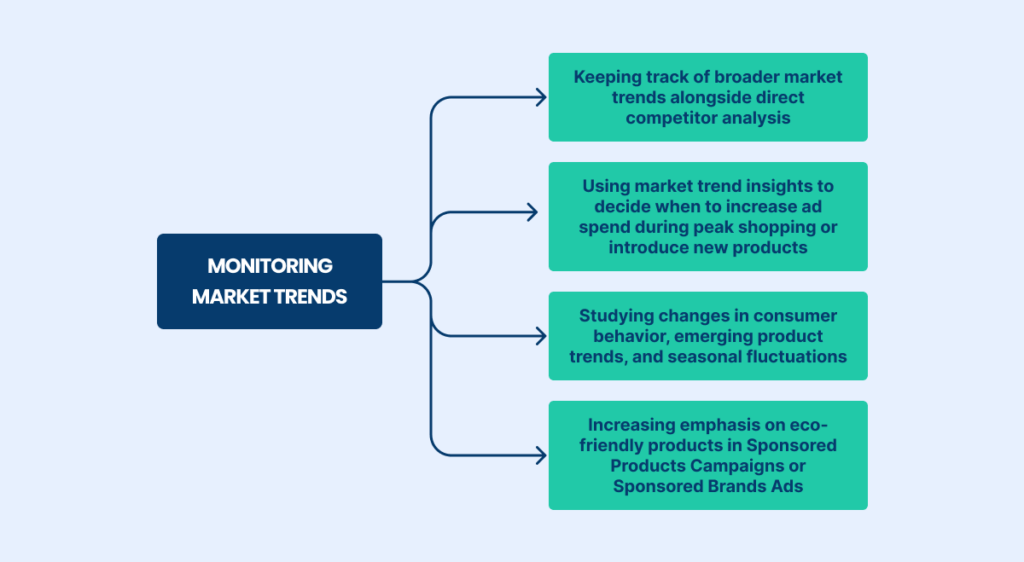
Leveraging Amazon DSP Ads:
- Amazon DSP Ads allow advertisers to reach audiences on and off Amazon throughout their shopping journey.
- Access to advanced analytics and reporting tools through Amazon DSP.
- These tools help understand how different consumer segments respond to ads.
Partner with [A] Growth Agency for Your Amazon Ads
Remember, Amazon’s advertising landscape is dynamic. Continuous monitoring, testing, and adaptation are the clues to achieving optimal results. Companies can significantly boost their market presence and profitability by understanding the different types of ads available and mastering how they operate.
Partnering with [A] Growth agency specializing in Amazon can provide invaluable support. We will help you develop a tailored advertising strategy, manage your campaigns, and optimize performance. Moreover, we believe in the power of data to inform and drive every strategy, ensuring our actions are as effective as they are innovative.
Need expert guidance to navigate the complexities of Amazon advertising?
